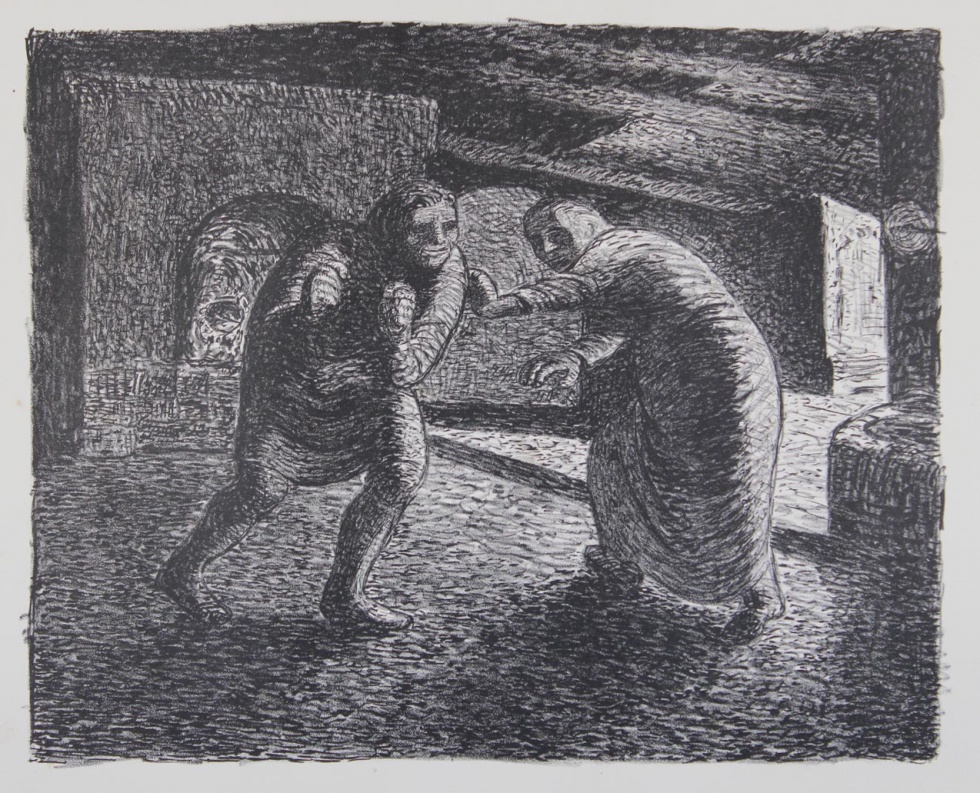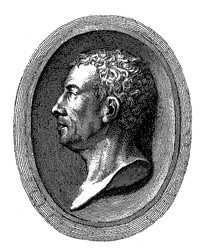Ernst Barlach verfasste 1907-1912 sein erstes Drama "Der tote Tag", das in einem Textband zusammen mit einer Mappe von 26 Originallithographien als 10. Werk der Pan-Presse bei Paul Cassirer herausgegeben wurde (gedruckt bei Julius Sittenfeld, Berlin). Es thematisiert in quasi mythisch überhöhter Form den autobiographisch verbürgten Kampf von Eltern um ihren Sohn.
Blatt 25 zeigt Mutter und Sohn in vehementer Aktion: den Sohn mit geballten Fäusten, die Mutter mit abwehrender Haltung.
en

